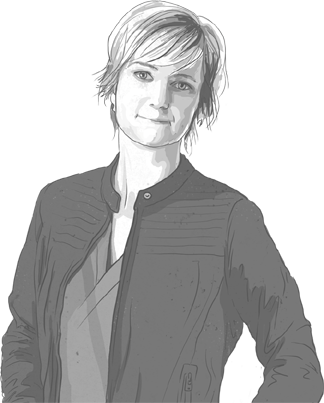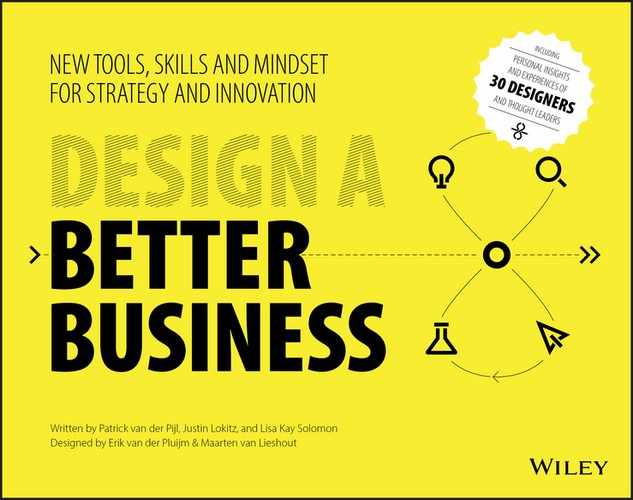Page 98
UNDERSTAND THE CUSTOMER
Once upon a time there was a business. That business really understood its customers. Because of that, the products and services of the business became popular, and it started to grow. Managers came in, processes were set up, and systems were put in place. Slowly, curiosity gave way to efficiency.
For a while, the business kept going well: customers continued to buy its products, and the value proposition stayed relevant. But then, one year, sales started to take a dive. None of the managers had a clue why. It didn’t make sense: the spreadsheets never predicted this would happen. According to what the managers knew, customers should still have been buying the product. Except they weren’t. The company had become complacent, hopelessly out of touch with the customer.
WE’VE ALL SEEN THIS STORY
In hindsight, it’s easy to say that this is not how to run a business. Yet it happens everyday. Business books and articles are littered with stories about once-famous companies that went bankrupt because they couldn’t change: retail warehouses, record companies, telcos, publishing houses, etc. So, why do businesses fall victim to outmoded systems and procedures?
THE FUTURE IS AT ODDS WITH THE CORPORATION.
// Grant McCraken, Cultural Anthropologist
There is a natural tendency to codify what you know about customers, so that the knowledge can be scaled and decision making can become easier. Putting such systems in place is not a bad thing, as long as they’re continuously tuned to take into account today’s reality. But tuning must be done by humans, not the systems.
DARE TO ASK QUESTIONS
We put our trust in managers who specialize in something and shrink away from asking questions for fear of sounding ignorant. History, however, shows that courage and persistence in asking design-minded questions — like “why?” and “what if?” — set the foundation for discovery and innovation.
In addition to being overly deferential to experts, we also are overly concerned with looking like an expert to our customers. Asking them a question feels embarrassing and scary. What if your customers no longer trust you? Aren’t you supposed to know everything already? Will they continue to buy your product?
Interestingly enough, in almost every case the opposite is true. By asking honest questions of your customers – questions that aren’t focused on making the sale or showing off knowledge, but are genuinely intended to get a better understanding of who they are and what they need – your customers will feel appreciated.
Page 99
EVERYBODY LIES (EVEN IF THEY DON’T MEAN TO)
Real observation is extremely important. Learning to understand body language, facial expressions, and behavior will help you paint a much clearer picture. That’s also the reason why you, as the designer, must do this yourself. Be present in interviews and observe behavior yourself. Allow your own brain to make the connections and see the patterns directly. Per Fitzpatrick, “Watching someone do a task will show you where the problems and inefficiencies really are, not where the customer thinks they are.”
Read more about Rob Fitzpatrick in “Master Questioning” on page 88
DEVELOP THE HABIT
For designers, observing and asking questions are daily habits of practice. When you start to notice more about the world around you, you start to pay attention to different details and quieter signals. By asking questions instead of beginning with statements, you actually become more curious. Your brain itself will adapt to this new curiosity and begin to make more interesting connections between observation, questioning, and analysis.
You’ll start to see the patterns that others miss. Your intuition will develop, and you’ll see things your customers need even before they do. ![]()
JUST PICK UP THE PHONE !
We were working with a home care organization. The CEO had an idea that involved a new customer segment: hospitals. She wanted to do two months of desk research. We told her not to wait, but to understand this customer segment better immediately. That is, don’t rely on desk research; instead have real-life conversations.
I was standing next to her and suggested she call the CEO of a hospital that was already in her network. Feeling a bit of pressure, she picked up the phone and called him that instant. It turned out the CEO was really happy she called him and invited her to lunch.
They had a great conversation during lunch, and because of the customer insights she gained, she understood she was not focusing on the real customer need. In just one lunch, she saved months of inefficient desk research and countless hours of analysis time. Not only did she gain new insights on a better opportunity, she also deepened a valuable customer relationship.

Maaike Doyer
Strategy Designer
